As temperatures drop and natural food sources become scarce, our feathered friends face significant challenges in finding sufficient nourishment during the winter months. Creating a DIY bird buffet in your yard not only helps local bird populations survive the harsh season but also brings the joy of birdwatching right to your doorstep. With a little creativity and some basic supplies, you can transform your outdoor space into a welcoming sanctuary that attracts a diverse array of winter birds. This article will guide you through everything you need to know about creating the ultimate winter bird feeding station, from selecting the right feeders and food to placement strategies that maximize bird safety and your viewing pleasure.
Understanding Winter Bird Feeding: Why It Matters
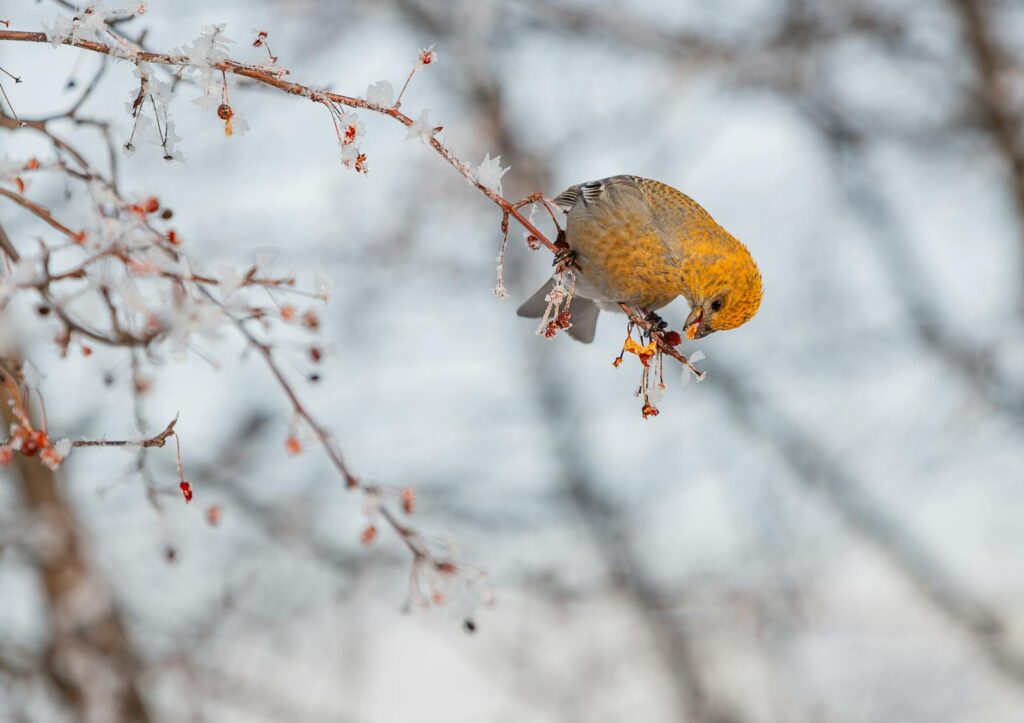
Winter bird feeding serves as a critical supplemental food source during the coldest months when natural foods like insects, berries, and seeds become limited or inaccessible beneath snow and ice. Research shows that consistent winter feeding can significantly improve survival rates for resident bird species and provide essential energy for migratory birds passing through. Unlike popular misconceptions, properly managed feeding stations don’t create unhealthy dependencies but rather help birds maintain their fat reserves during periods when they burn more calories to stay warm. Additionally, winter feeding stations create valuable citizen science opportunities, as regular observers can contribute to important data collection efforts like the Great Backyard Bird Count and Project FeederWatch, which help ornithologists track population trends and distribution patterns across North America.
Essential DIY Feeder Types for a Complete Winter Buffet
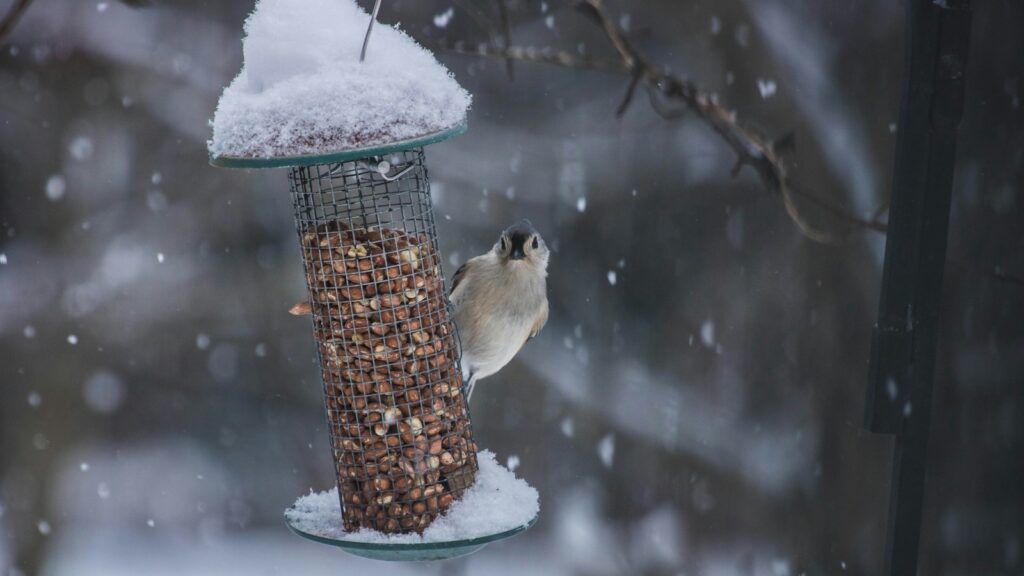
Creating a comprehensive winter bird buffet requires offering various feeder types to accommodate different feeding styles and bird preferences. Tube feeders represent one of the most versatile options, featuring multiple ports that allow several birds to feed simultaneously while protecting seeds from moisture and snow. Platform or tray feeders attract ground-feeding species like juncos, sparrows, and mourning doves, though these require frequent cleaning and should include drainage holes to prevent seed spoilage. Suet cage feeders are winter essentials, providing high-energy fat that woodpeckers, nuthatches, and chickadees particularly appreciate during cold spells. For a unique DIY approach, repurpose household items like tea cups, mason jars, or hollow logs into creative feeders that add personality to your bird buffet while serving functional feeding purposes.
High-Energy Seeds and Grains for Cold Weather
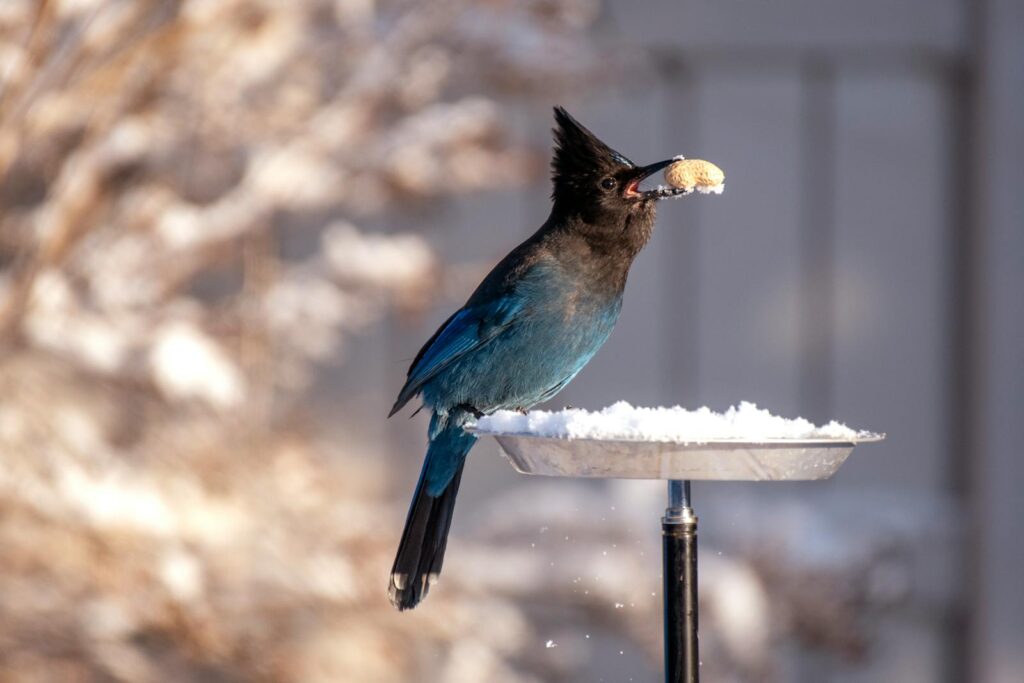
Black oil sunflower seeds stand as the cornerstone of any winter feeding program, offering high oil content that provides excellent energy for birds while their thin shells make them accessible to species with various beak strengths. Hulled sunflower hearts, though more expensive, eliminate waste and prevent unwanted germination beneath feeders, making them particularly valuable in maintained landscapes. Nyjer (thistle) seed serves as specialty food for finches, siskins, and redpolls, requiring designated feeders with tiny ports that prevent wastage of this premium offering. White millet appeals to ground-feeding species, while striped sunflower seeds and safflower attract larger birds like cardinals and grosbeaks—the latter having the added benefit of being less appealing to squirrels and starlings, making it an excellent choice for locations with mammal competitors.
DIY Suet Recipes That Birds Can’t Resist
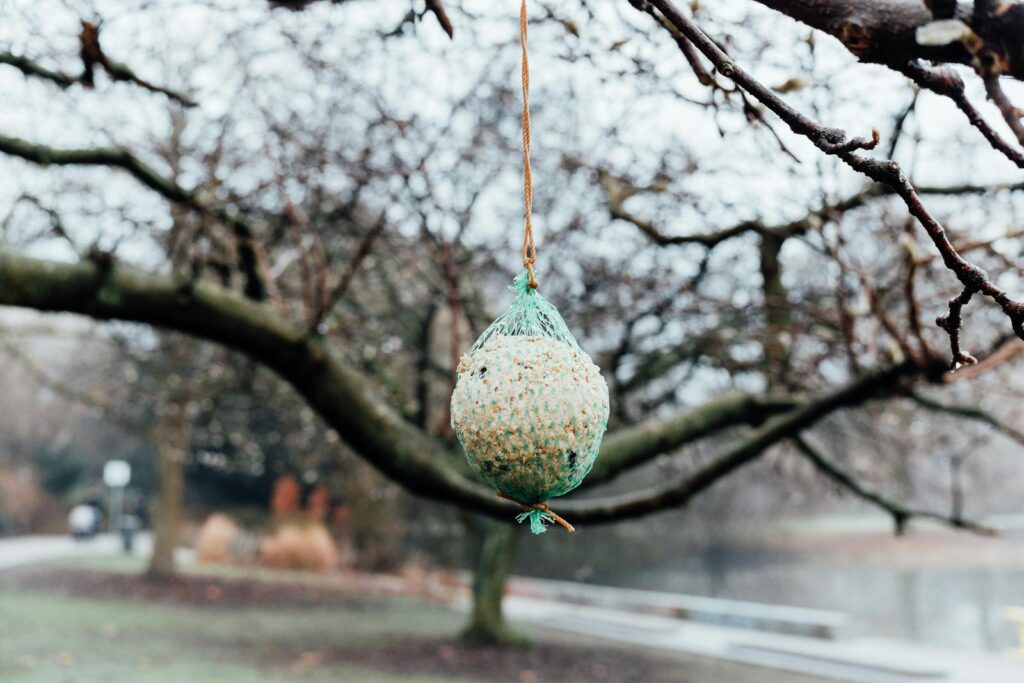
Homemade suet provides exceptional nutritional value for winter birds while allowing you to customize ingredients based on local species preferences. The basic recipe combines one part rendered beef fat (available from butchers or rendered at home) with one part peanut butter, melted together and mixed with a combination of cornmeal, rolled oats, and bird seed before cooling in molds or recycled containers. For woodpecker-specific suet, incorporate dried mealworms, chopped nuts, and small pieces of dried fruit, which provide additional protein and natural sugars that these active birds particularly value. Berry-based recipes featuring dried cranberries, blueberries, or cherries tend to attract mockingbirds, waxwings, and thrushes that normally favor fruit in their diet. Always avoid ingredients harmful to birds, including chocolate, salt, artificial sweeteners, and low-quality fats that can mat feathers and reduce insulation properties.
Constructing a Multi-Tier Feeding Station
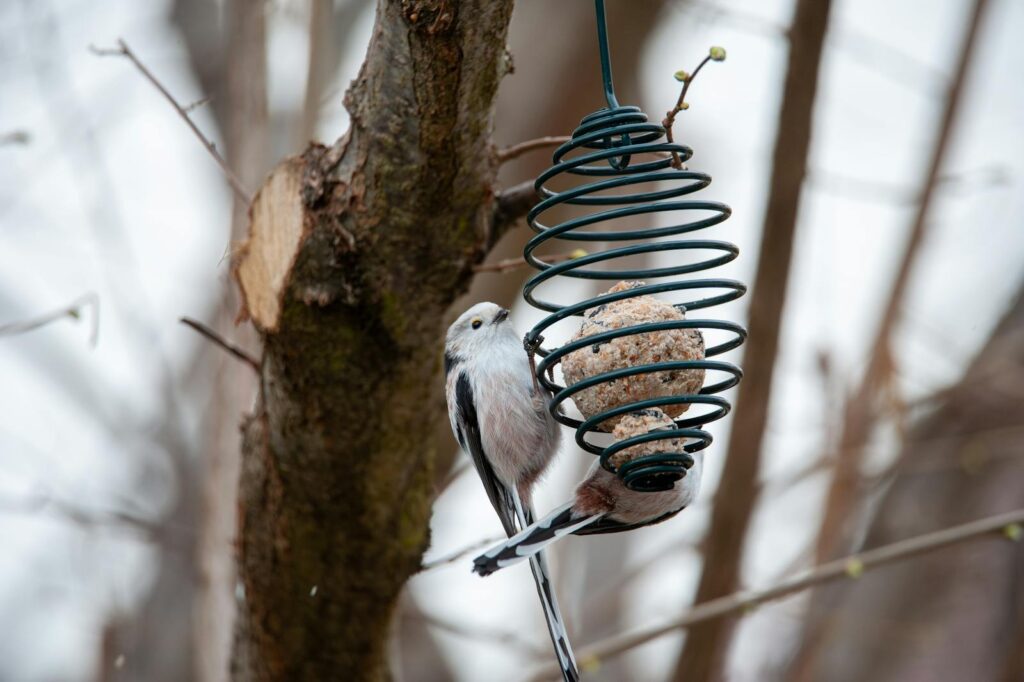
A multi-tier feeding station creates a feeding hub that maximizes limited space while accommodating different bird species’ preferences. Begin with a sturdy central pole system (metal shepherd’s hooks or plumbing pipes work well) anchored securely into the ground below the frost line or mounted to a deck railing with appropriate hardware. Install horizontal arms at varying heights, with upper levels dedicated to sunflower and mixed seed feeders that attract chickadees, finches, and cardinals, while positioning suet cages at mid-level where woodpeckers and nuthatches prefer to feed. The lowest tier should accommodate platform feeders or large seed trays for ground-feeding species like juncos and sparrows, creating a hierarchical feeding environment that mimics natural foraging patterns. Include strategic perches using natural branches to provide landing spots for birds approaching and leaving the station, which increases their comfort level and extends their feeding visits.
Recycled Materials for Creative Bird Feeders
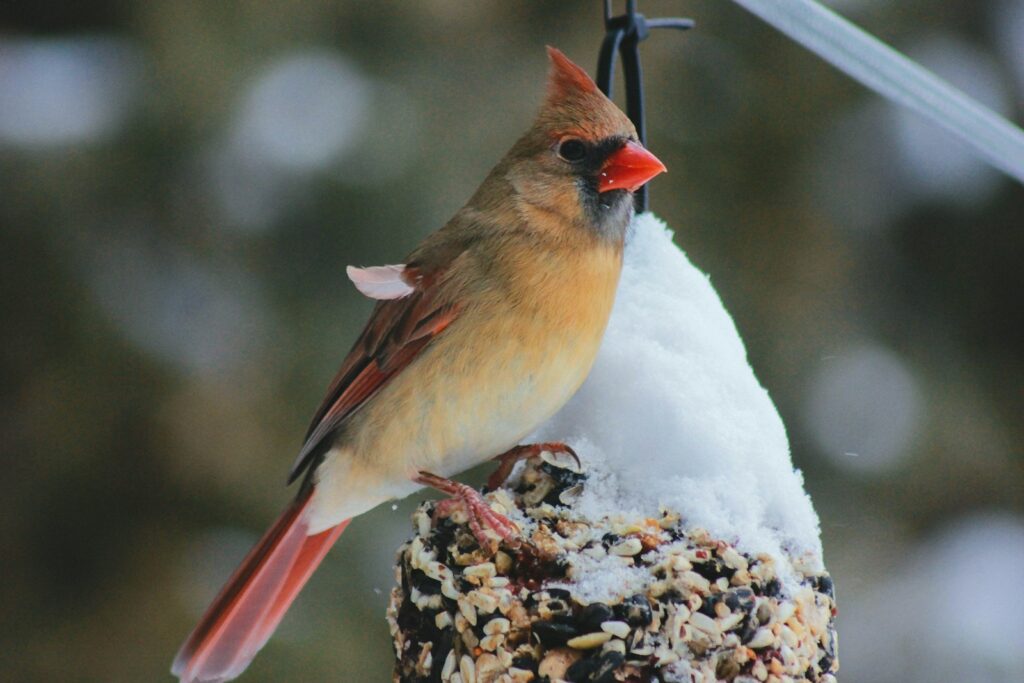
Upcycling household items into bird feeders represents both an environmentally friendly and budget-conscious approach to winter bird feeding. Plastic bottles transformed with strategic feeding ports and perching dowels create effective tube feeders, while milk cartons with cutout windows serve as excellent sheltered feeding stations that protect seed from snow. Empty tin cans, thoroughly cleaned and with edges safely finished, make durable suet or seed containers when fitted with drainage holes and hanging wires. Repurposed wooden items like old dresser drawers, baking pans, or shallow wooden boxes can be converted into platform feeders with the addition of drainage holes and raised edges to contain seed. When using recycled materials, prioritize non-toxic items, avoid sharp edges that could harm birds, and select materials that withstand moisture and temperature fluctuations without deteriorating or leaching chemicals.
Strategic Placement for Maximum Bird Safety
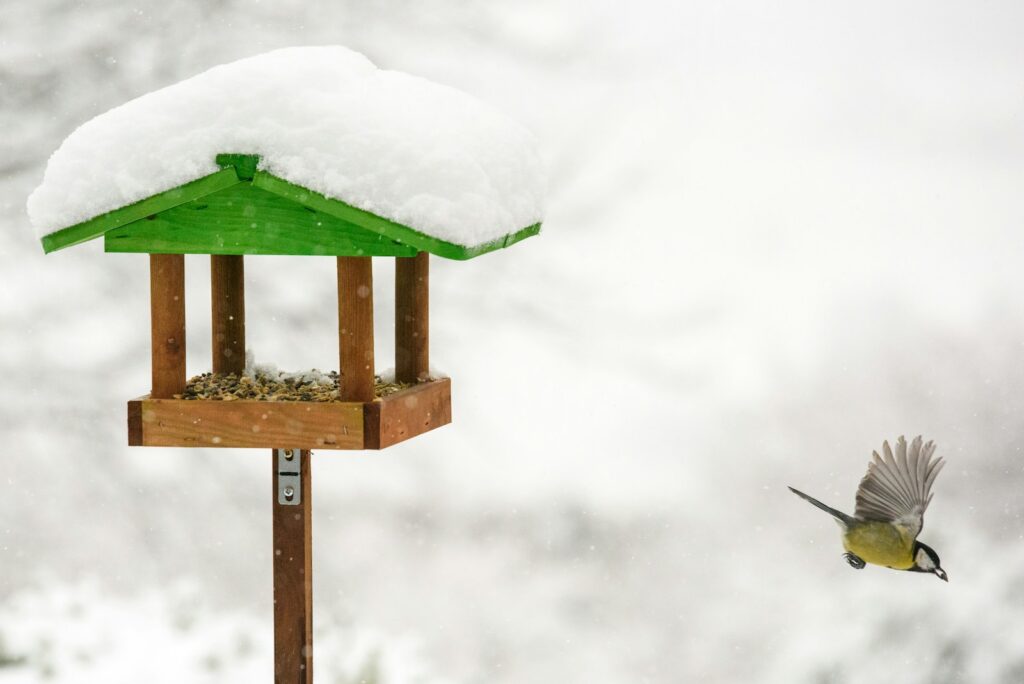
Proper feeder placement significantly impacts both bird safety and feeding success during winter months. Position feeders at least 10-12 feet from dense shrubs or evergreen cover that provides birds with quick escape routes from predators while simultaneously offering sheltered perches where they can assess the feeding area before approaching. Create predator deterrents by avoiding ground placement in areas where neighborhood cats might lurk, and consider installing baffles above and below pole-mounted feeders to prevent squirrels and climbing predators from accessing the feeding station. Distance from windows represents another critical safety factor—either place feeders within three feet of windows so birds can’t build up dangerous momentum if startled, or position them more than 30 feet away to prevent window collisions entirely. Additionally, consider wind protection when positioning your winter buffet, as birds expend less energy feeding in locations sheltered from prevailing winter winds.
Water Sources: The Often-Forgotten Essential
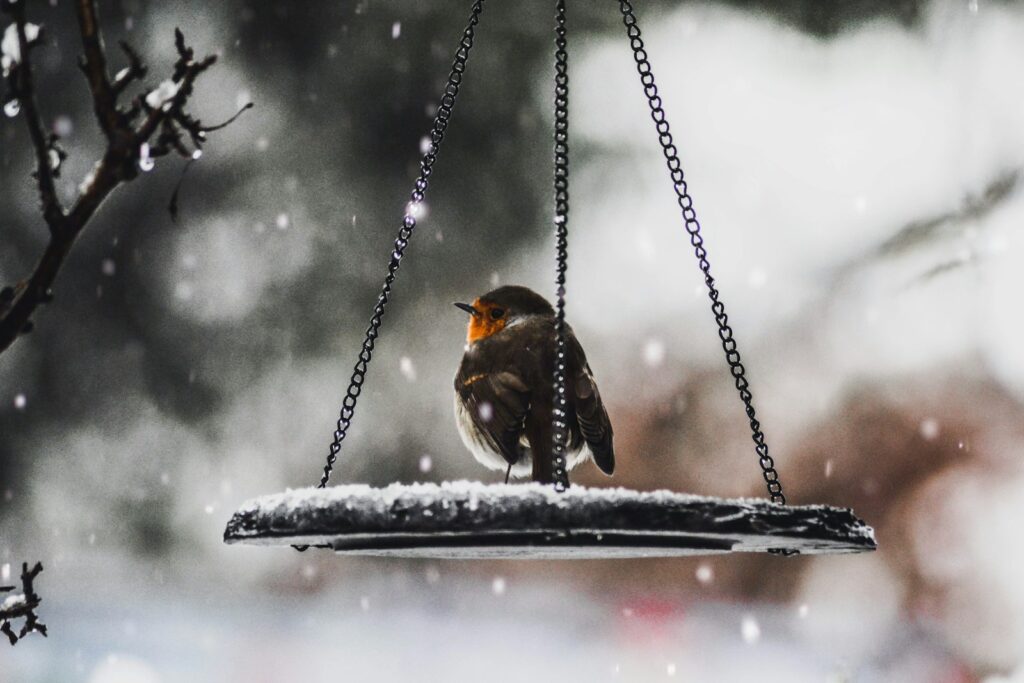
Fresh water arguably attracts more winter birds than food, as natural water sources often freeze during cold months, making hydration and bathing challenging for resident birds. Heated bird baths represent the gold standard for winter water provision, maintaining open water even during freezing temperatures, though they require access to electricity and proper installation for safety. For DIY alternatives, create a simple solar-powered water station using a dark-colored, shallow container placed in a sunny location, which absorbs heat and delays freezing, refreshed manually when temperatures permit. Water depth should remain shallow (1-2 inches maximum) with textured surfaces or added stones that provide secure footing for drinking birds, preventing dangerous slips or wet feathers that could lead to hypothermia. Regular cleaning prevents bacterial buildup and disease transmission, making water maintenance a critical component of responsible winter bird feeding.
Fruit and Berry Options for Winter Thrushes and Waxwings
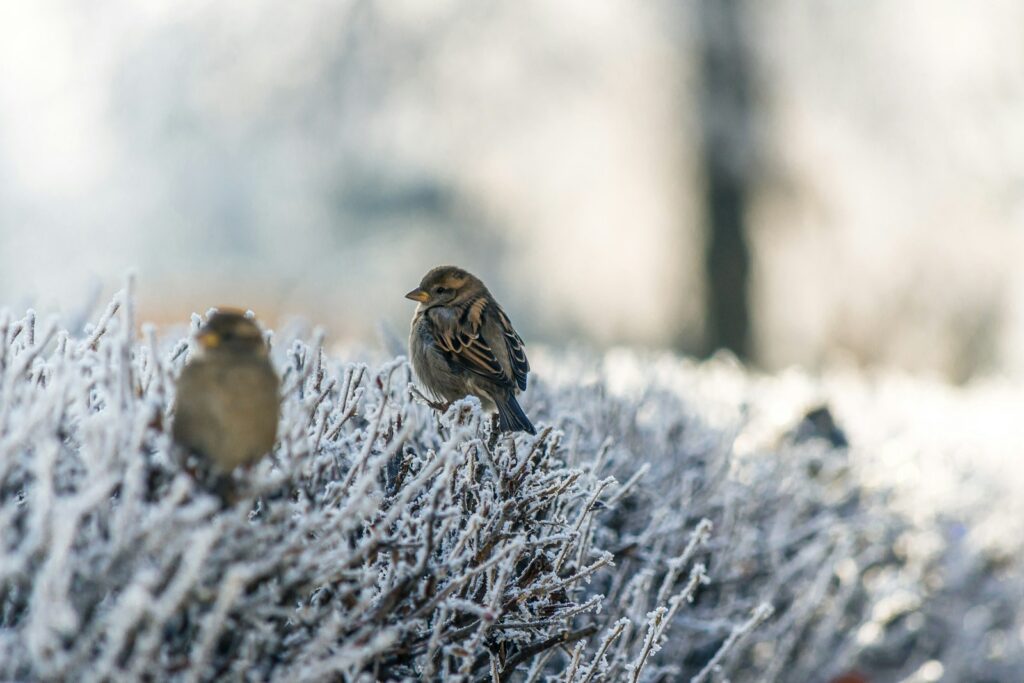
Fruit-eating species like robins, bluebirds, and cedar waxwings often remain year-round in many regions but struggle to find natural fruit sources during winter months. Create dedicated fruit feeding stations by threading chunks of apple, orange halves, or reconstituted dried fruit onto weather-resistant wire or dowels positioned horizontally at eye level for optimal viewing. Frozen berries, particularly blueberries and cranberries, can be offered in shallow dishes or specialized fruit feeders, providing essential nutrients and natural sugars that help these specialized feeders maintain energy levels. For a sustainable approach, consider planting native fruit-bearing shrubs like winterberry holly, American beautyberry, or native viburnums that hold their fruit well into winter, creating a natural buffet that supports fruit-eating species. Grape jelly served in small quantities represents another attractive option, particularly appealing to orioles and catbirds, though it should be offered sparingly and in specialized containers that prevent birds from becoming sticky or soiled.
Squirrel-Proofing Your Winter Bird Buffet
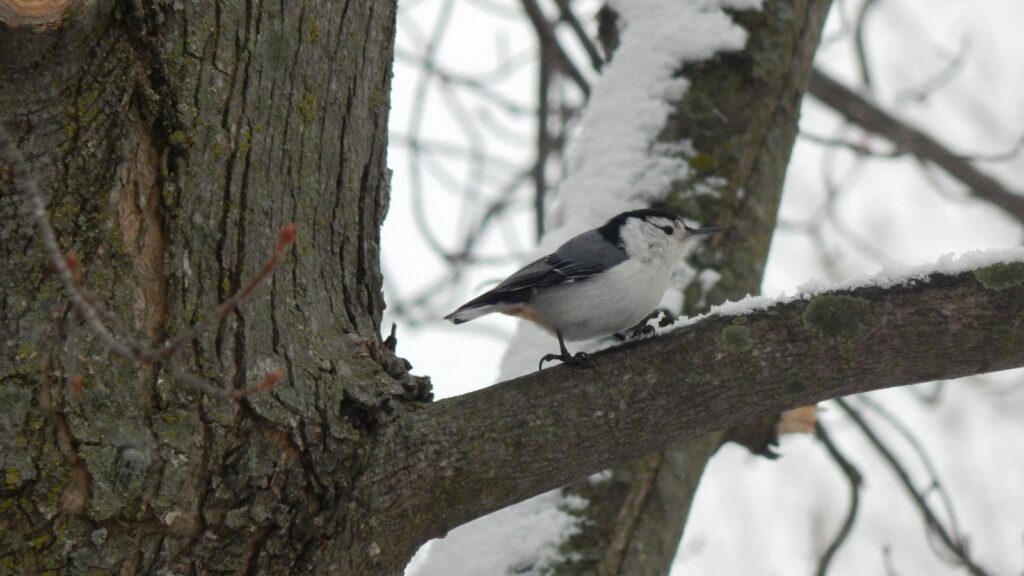
Squirrel competition represents perhaps the greatest challenge to maintaining an effective winter bird buffet, as these intelligent mammals can consume large quantities of seed and damage feeding equipment. Physical barriers provide the most reliable protection, with properly installed baffles (at least 15 inches in diameter) positioned above hanging feeders or below pole-mounted systems preventing squirrels from reaching feeding ports. Weight-activated feeders offer technological solutions, with mechanisms that close access to seed when triggered by an animal heavier than the targeted bird species, though these require more investment than simpler approaches. Strategic placement creates natural squirrel deterrence—position feeders at least 10 feet from jumping-off points like trees or structures, and mount them at a height that prevents ground access while remaining comfortable for bird viewing. As a complementary strategy, consider providing dedicated squirrel feeding stations with corn, peanuts, or specialized squirrel food placed away from bird feeders, acknowledging these mammals’ place in the ecosystem while redirecting their feeding activities.
Maintenance and Hygiene Practices
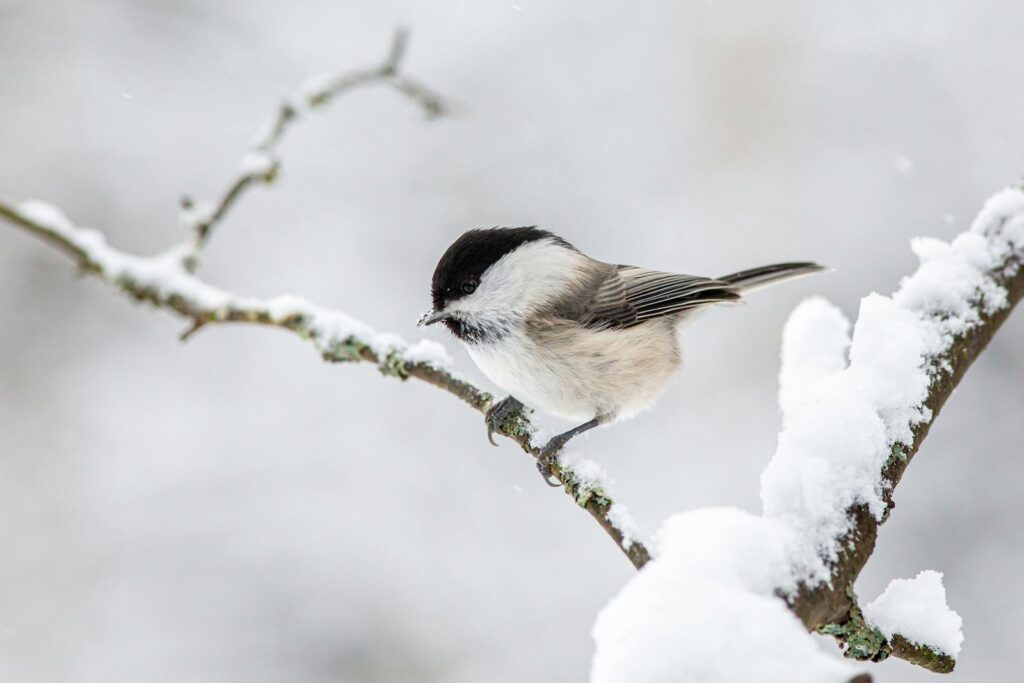
Regular maintenance proves essential for preventing disease transmission at winter feeding stations, where concentrated bird activity can spread pathogens if proper hygiene isn’t maintained. Establish a weekly cleaning schedule for all feeders, using a solution of one part bleach to nine parts water to disinfect surfaces, followed by thorough rinsing and complete drying before refilling with fresh food. During periods of wet weather, check seed more frequently for signs of mold or sprouting, which indicate moisture contamination that could harm birds if consumed. Implement a rotation system for ground feeding areas, moving platform feeders to fresh locations periodically to prevent seed hull buildup and potential bacterial growth in a single area. Keep records of cleaning dates and observations about feeder conditions, which helps establish appropriate maintenance intervals based on your specific climate conditions and feeding station usage patterns.
Creating Sheltered Feeding Areas
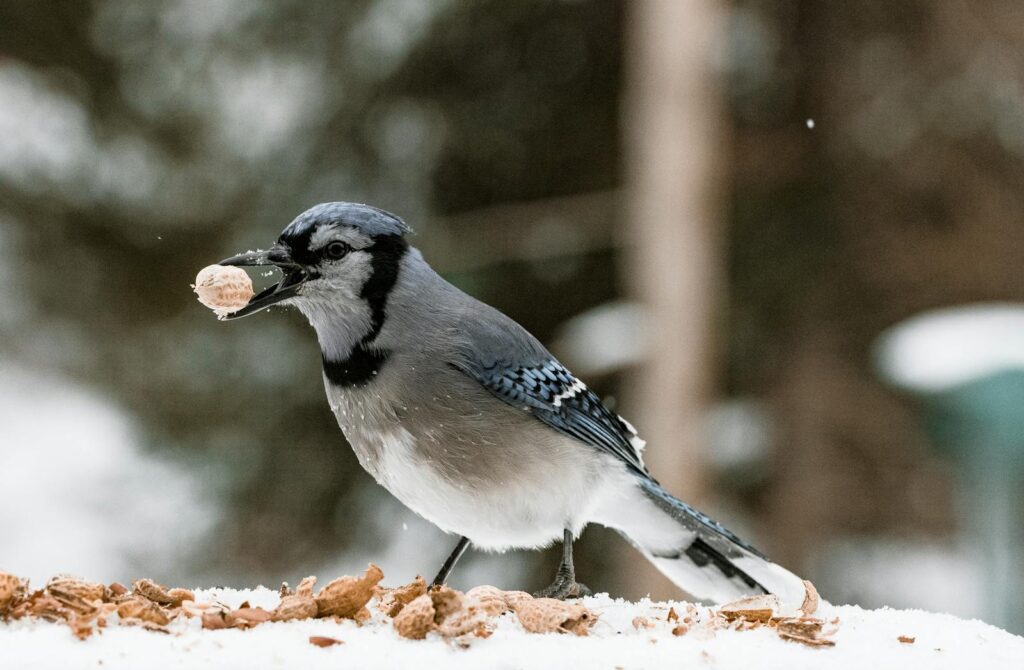
Sheltered feeding areas provide birds with protection from harsh weather while conserving their energy during feeding sessions. Construct simple roofed feeding platforms using weather-resistant wood and clear plastic or plexiglass sides that block prevailing winds while maintaining visibility for both birds and observers. Brush piles strategically positioned near feeding stations create valuable microhabitats where birds can retreat during sudden weather changes or predator threats, with loosely stacked branches providing multiple entry and exit points. For deck or patio feeding stations, consider installing temporary clear windbreaks during the coldest months, using rolled plastic sheeting or repurposed storm windows positioned to block dominant winter wind patterns while maintaining an open feeling that doesn’t discourage bird visitation. These sheltered options prove particularly valuable during ice storms or heavy snow events when exposed feeders become difficult for birds to utilize effectively.
Documenting Your Winter Bird Visitors
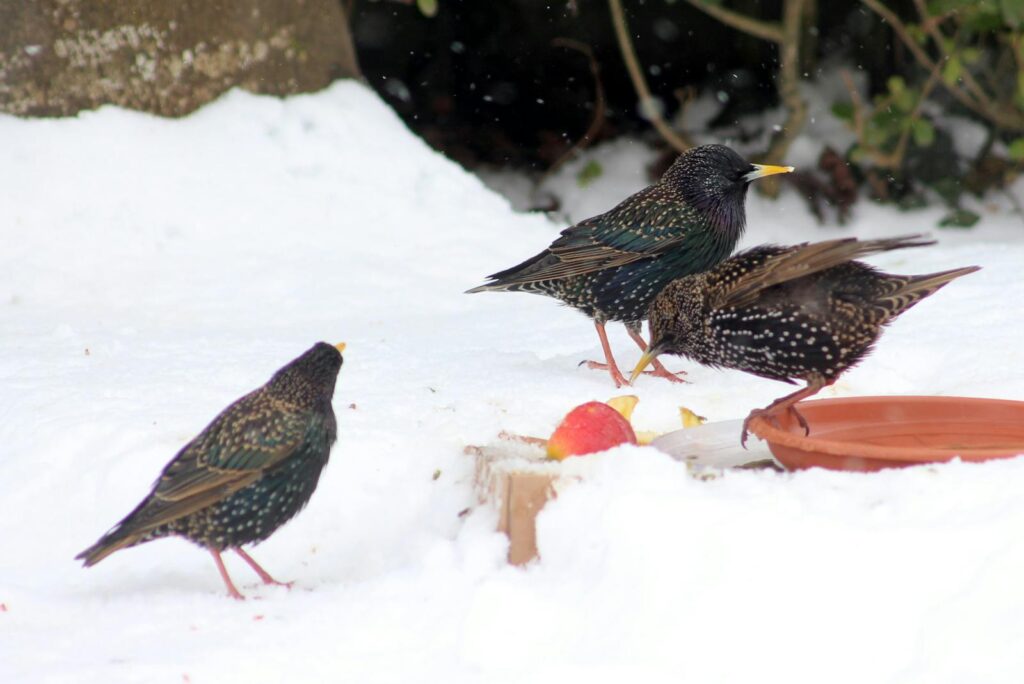
Maintaining systematic records of birds visiting your winter buffet enhances the experience beyond casual enjoyment, creating valuable data for personal and scientific purposes. Create a simple identification station near your viewing window with reference guides, binoculars, and a dedicated notebook or digital record system for documenting species, numbers, behaviors, and feeding preferences throughout the winter season. Participate in community science programs like the Great Backyard Bird Count, Project FeederWatch, or eBird, which utilize citizen observations to track bird population trends and movement patterns across large geographic areas. Photographic documentation adds another dimension to your winter bird buffet experience—consider setting up a dedicated camera position with appropriate lenses for capturing visitors without disturbing their feeding behavior. These records prove particularly valuable when planning next season’s feeding program, allowing you to tailor seed types and feeder styles to the specific preferences of your local winter bird community.
Expanding Beyond Feeding: Complete Winter Bird Habitat
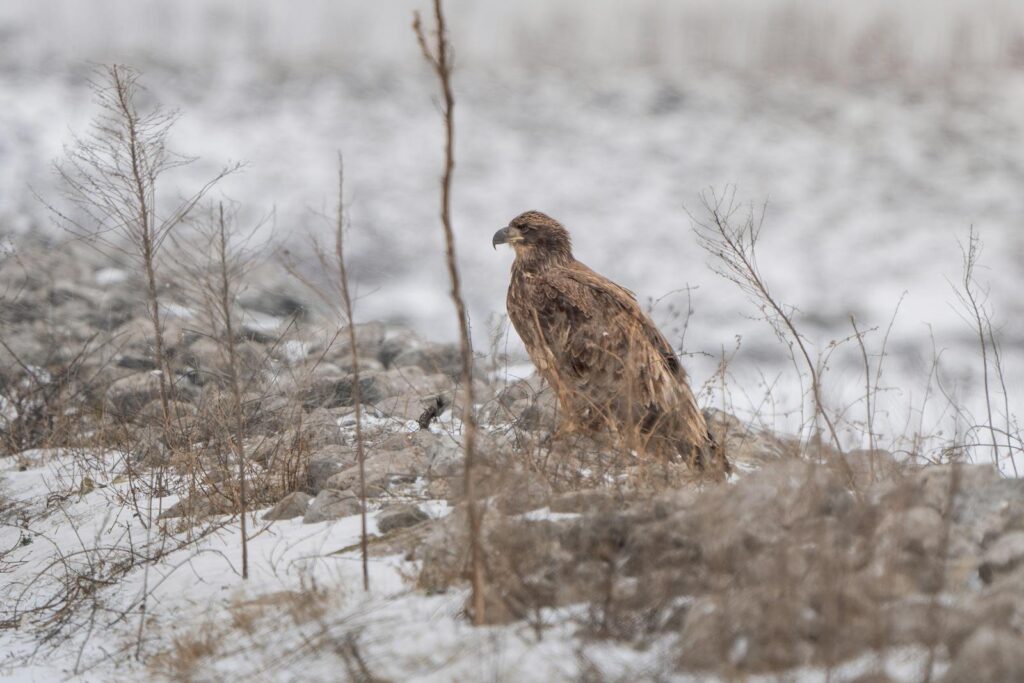
While feeding stations provide essential nutritional support, creating a comprehensive winter bird habitat requires addressing multiple needs beyond food alone. Incorporate dense evergreen shrubs and trees that provide critical roosting sites where birds can conserve body heat during cold nights, with native conifers offering superior shelter compared to many deciduous options. Maintain brush piles and unmown areas where native seed-bearing plants can support natural foraging, complementing your provided foods with the natural diet birds evolved to utilize. Install roosting boxes specifically designed for winter use, featuring smaller entrance holes, interior perches, and proper ventilation that allows multiple birds to share body heat during extreme weather events. This holistic approach to winter bird support creates a backyard ecosystem that addresses survival needs comprehensively, making your property a true sanctuary during the challenging winter months when birds face multiple environmental stressors simultaneously.
Creating a DIY winter bird buffet represents far more than a simple act of feeding—it establishes a relationship with your local bird community that brings joy, education, and conservation value during the challenging winter season. By offering diverse foods through appropriately designed feeding stations, you provide critical nutritional support while creating opportunities to observe behaviors and species interactions rarely seen otherwise. As you develop your winter feeding program, remember that consistency matters more than quantity—birds come to depend on reliable food sources during harsh weather, so maintain your buffet throughout the season rather than offering sporadic feeding. The relationships developed during winter often extend into spring and summer as many of these same birds return to nest in areas where they found reliable winter support. In this way, your DIY winter bird buffet becomes not just a seasonal offering but a foundation for year-round connection with the natural world just outside your window.
